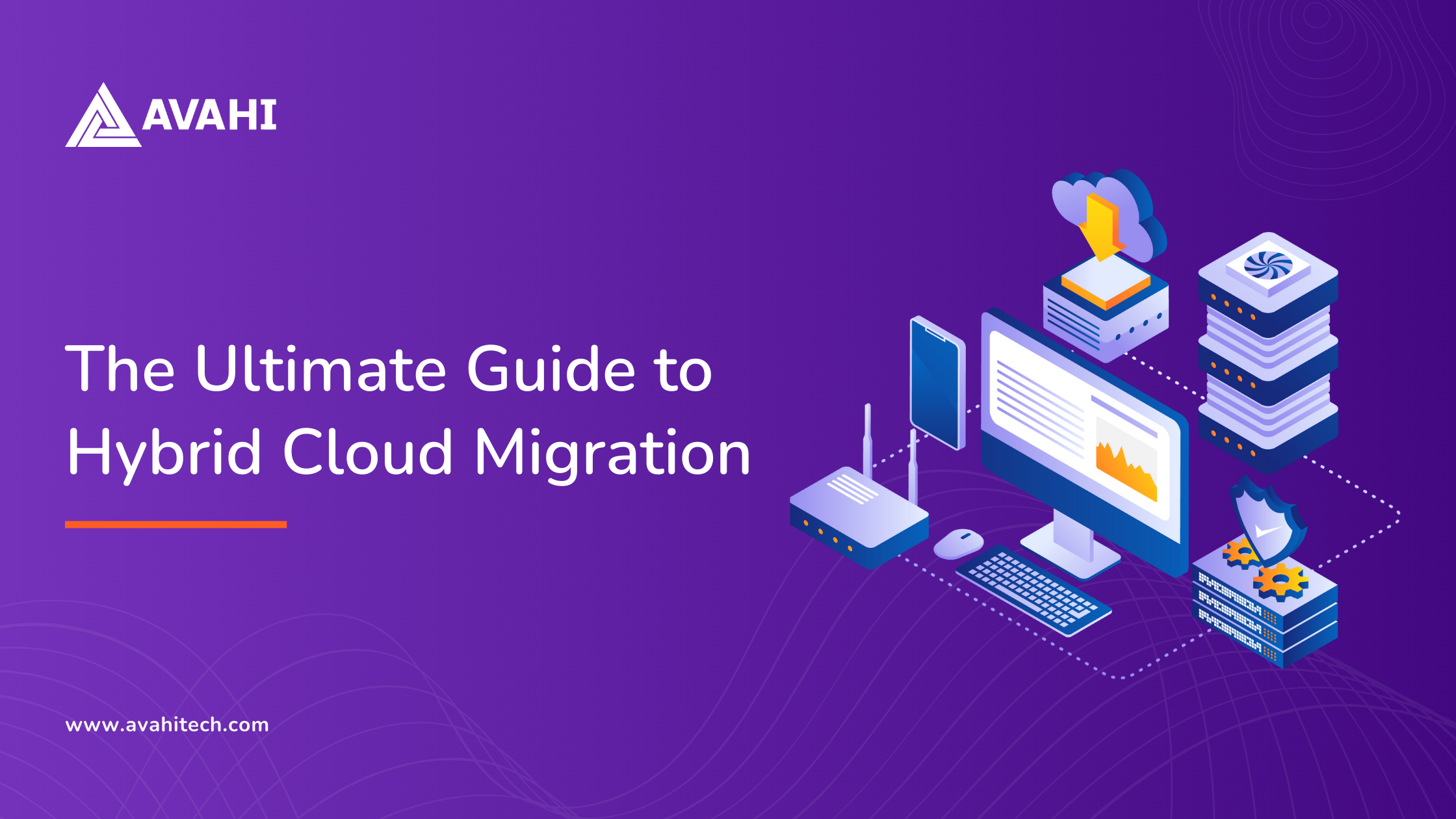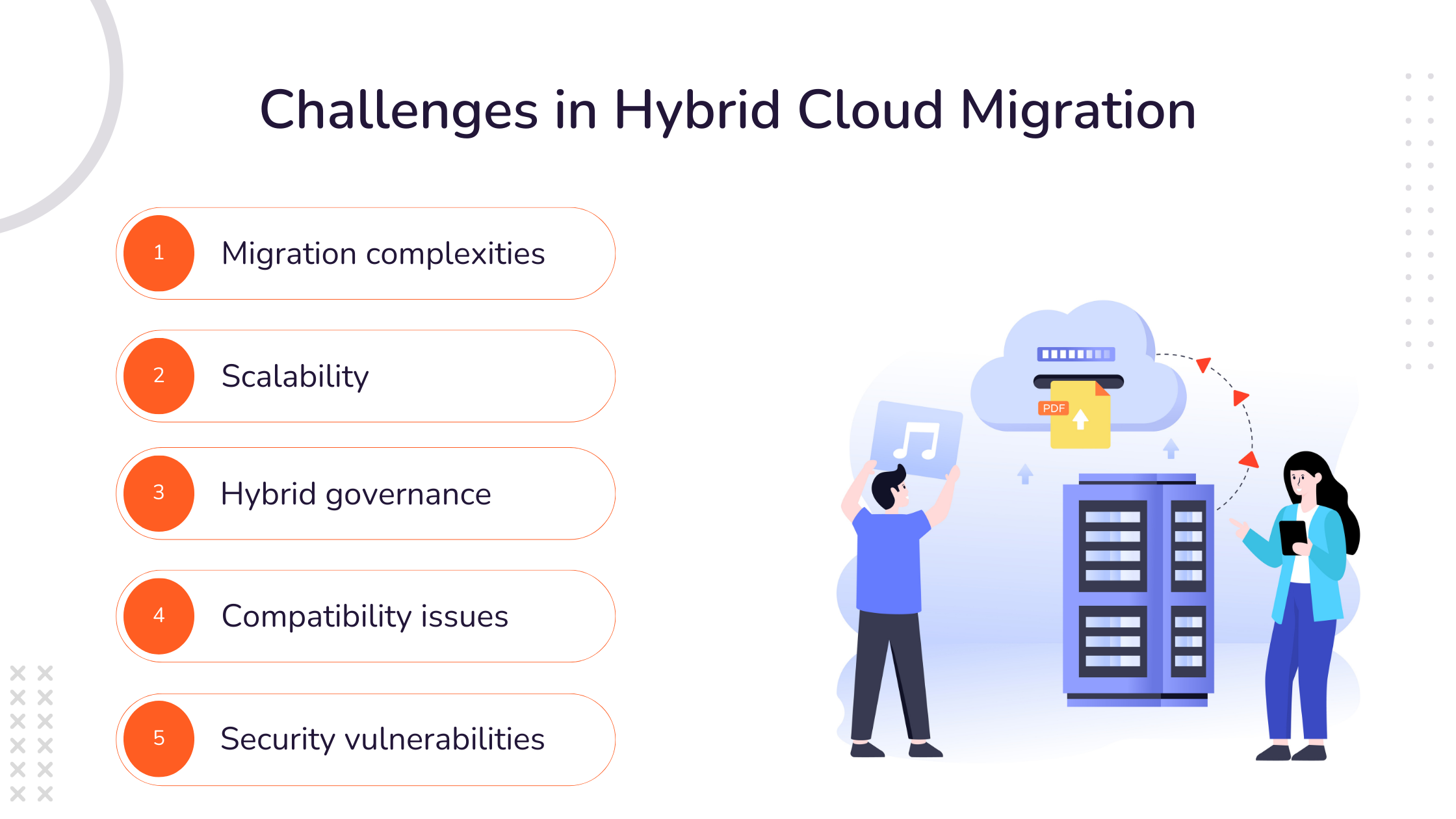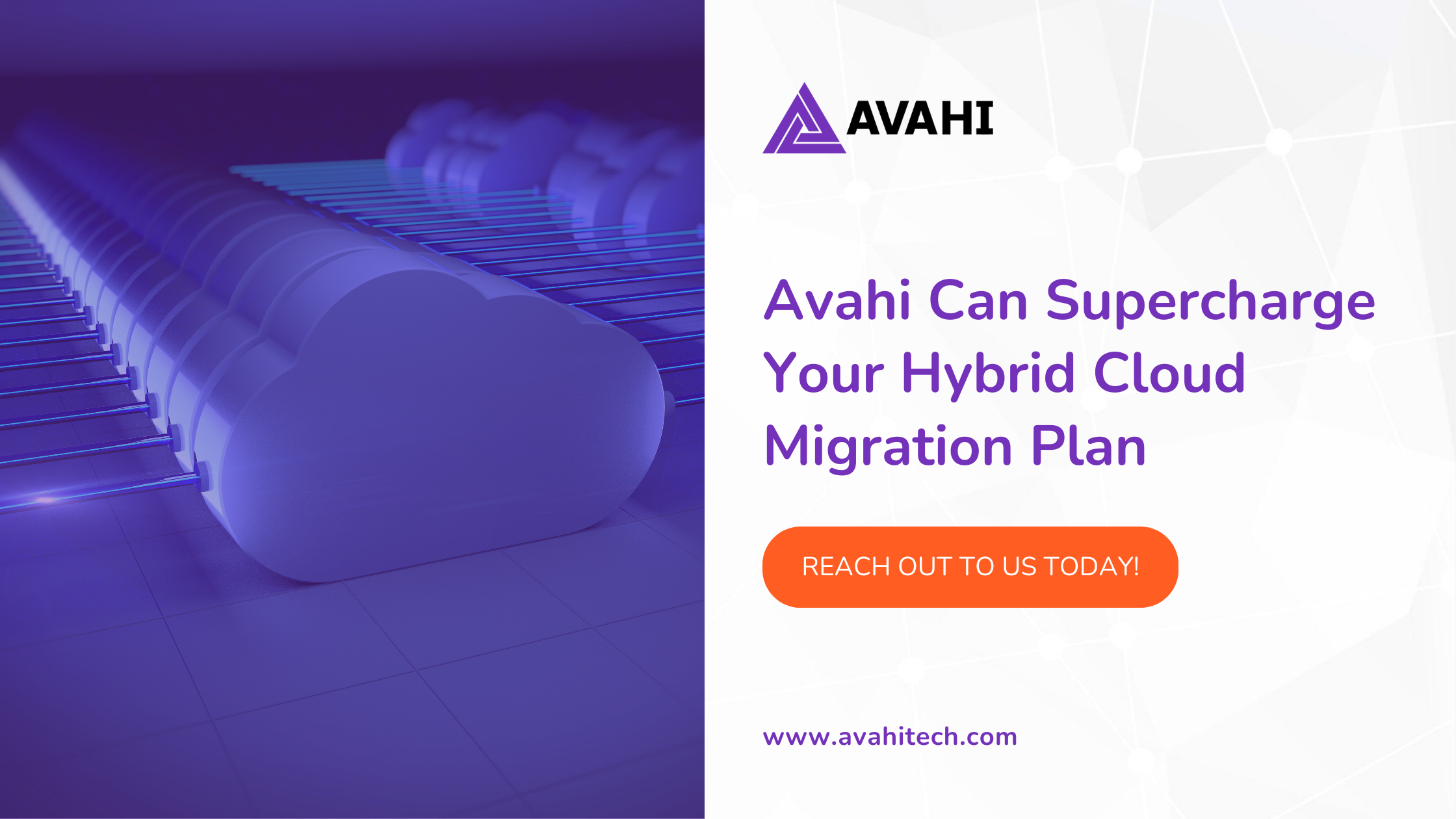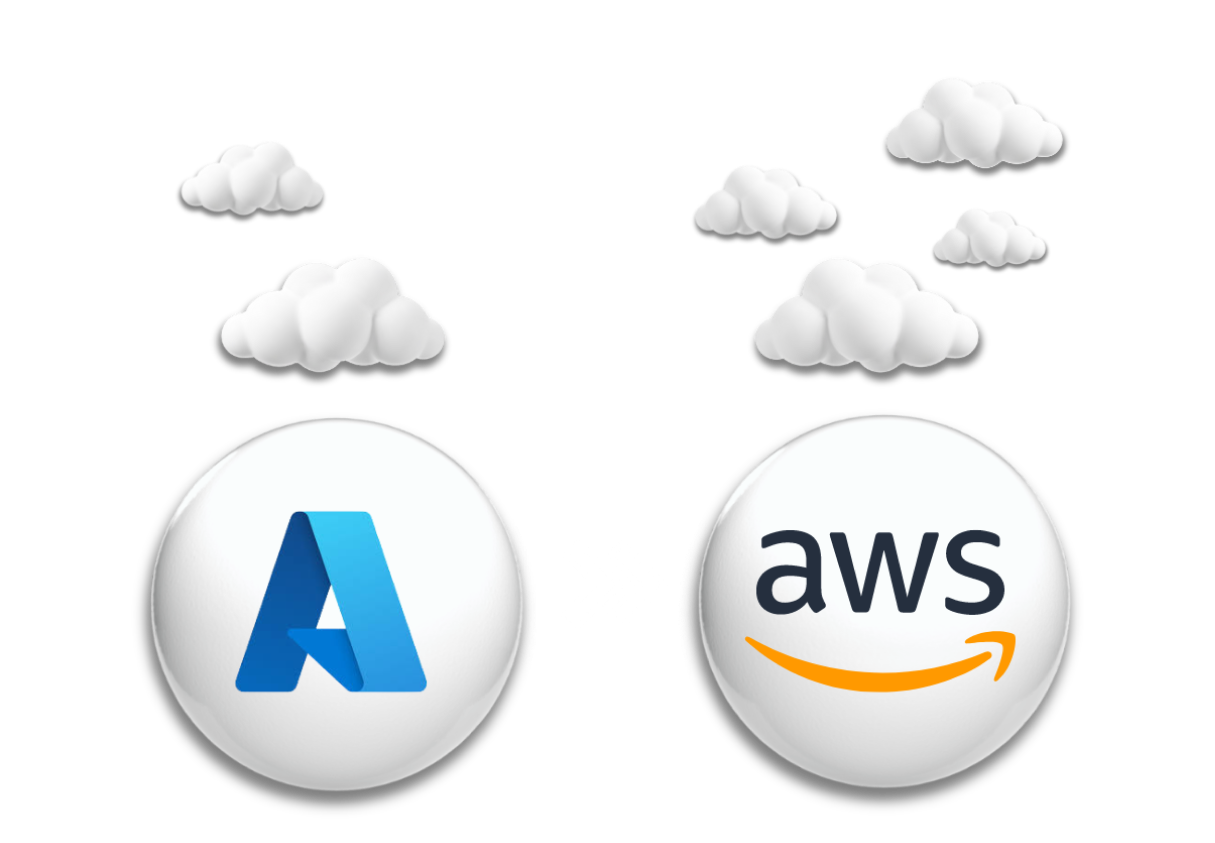Cloud migration significantly benefits enterprises, including reduced IT costs, better scalability, and improved business agility. However, the only way to reap all the numerous benefits of cloud migration is by using a migration strategy that perfectly aligns with your business requirements and existing cloud infrastructure.
Hybrid cloud migration allows you to leverage public and private cloud infrastructure benefits. Businesses that want to secure some of their data on a private cloud while improving agility and scalability with the public cloud can benefit from hybrid migration.
However, the journey to hybrid cloud migration can be long and complex if you don’t have the right experience or experts.
This article discusses everything you need to know about hybrid cloud migration.
What is Hybrid Cloud Migration?
A hybrid cloud migration strategy involves deploying workloads in public and private clouds to provide a unified experience across cloud and legacy environments. By establishing a mixed data architecture, hybrid cloud approaches allow businesses to seamlessly move their applications and data between private and public cloud infrastructure. Instead of restricting businesses to one solution, hybrid cloud migration offers greater flexibility and scalability with more deployment options.
The biggest benefit of a hybrid cloud is that you get the best of both worlds – The public cloud makes applications more accessible and cost-effective. The private cloud makes it easier to secure sensitive customer data.
Types of Hybrid Cloud Migration
Let’s take a look at the different types of hybrid cloud migration strategies you can consider:
- Lift and shift: Suitable for applications with straightforward requirements, lift and shift involves migrating workloads from on-premises to a cloud environment without making any changes.
- Replatforming: This approach involves adjusting existing workloads and applications to optimize them for the hybrid environment and deploying them successfully for better efficiency.
- Containerization: It involves running databases, workloads, and applications in containers so that they can run on different platforms in isolated environments. The approach helps build scalable hybrid architecture with improved flexibility and resilience.
Migration complexities
With any migration, there are risks involved. However, the level of complexity increases with hybrid migration since you are moving workloads to different environments. You need to ensure the workloads are migrated and deployed to the right environments and work seamlessly together.
Scalability
Hybrid cloud migration can often involve moving one part of an application to a private cloud while the other stays in the public cloud. In such cases, it can be difficult to scale applications when there are sudden changes in capabilities or requirements.
Hybrid governance
Businesses across different industries must follow necessary data security and privacy compliance standards. Any non-compliance can lead to heavy penalties and damage the brand’s reputation. For companies migrating workloads to private and public cloud environments, governance becomes just as important as critical workloads and processes. Any oversight or lack of control can put the company at risk.
Establishing and maintaining a governance framework when multiple environments are involved can seem challenging and time-consuming, but it’s necessary.
Compatibility issues
With multiple infrastructure platforms involved, there can be an increased possibility of incompatibility among different applications, workloads, and databases.
Security vulnerabilities
When data moves between different platforms continuously, there is an added security risk that organizations need to address. Reviewing security policies and identifying vulnerabilities across all the new and existing integrations is necessary.
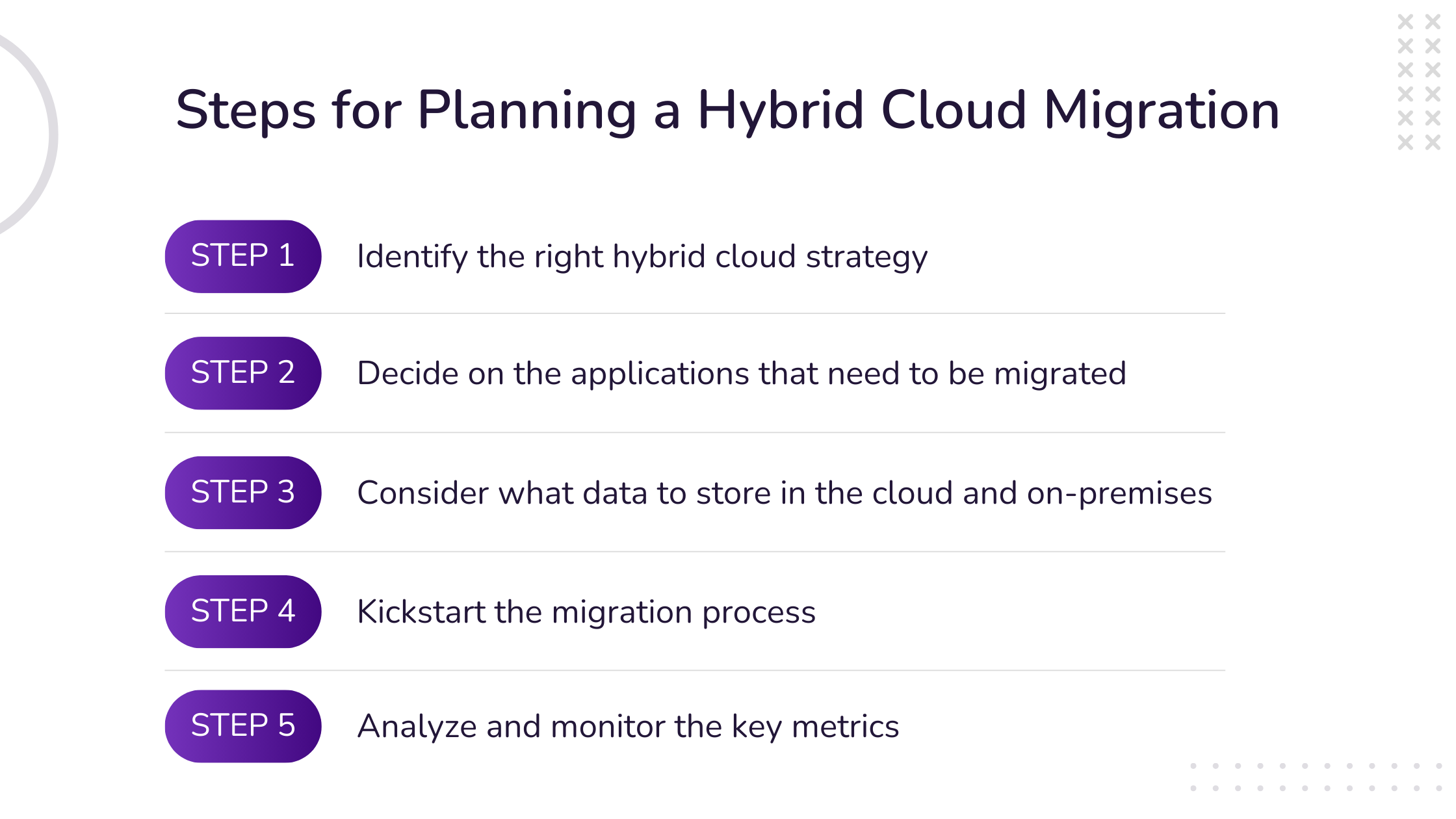
Here are the steps to execute a hybrid cloud migration:
1- Identify the right hybrid cloud strategy
A well-planned hybrid cloud strategy determines how migration goals will be achieved. Ideally, the cloud migration strategy should include the following:
- Identifying data and workloads that need to be migrated
- Determining the data compliance requirements of the different cloud platforms
- Addressing compliance, security, and performance challenges
2- Decide on the applications that need to be migrated
Every business has multiple applications that it uses to streamline its day-to-day operations. When these applications are moved, they will need different migration strategies and integrations for successful migration.
When you have a cohesive, multi-platform environment, integration between different applications, processes, data, and governance becomes paramount to maintain seamless operations.
Since applications consist of many parts, deciding which parts will move to which cloud platforms is necessary. At the same time, it’s also important to consider the order of applications that will be migrated.
You should also analyze whether the existing applications are suitable for the hybrid environment. You might also have to make adjustments to legacy applications to ensure they are ready to be migrated without any disruptions.
Automating various processes like resource provisioning, application deployment, and performance monitoring can boost the migration process.
3- Consider what data to store in the cloud and on-premises
You might have different types of data that will have to be handled differently when migrated. Data critical to the business can be migrated to the private cloud for added security. On the contrary, other data can be moved to a public cloud to optimize cloud costs.
4-Kickstart the migration process
Seamless migration requires a consistent and reliable network connection. Organizations must always follow the migration strategy and look out for potential risks and vulnerabilities to reap the benefits of leveraging multiple platforms. A critical disruption during the migration process can lead to financial losses, company operations being affected, and reduced customer trust.
5- Analyze and monitor the key metrics
A successful hybrid cloud migration strategy requires constantly monitoring time and costs. While response times and performance statistics are important, they end up being of no consequence if they increase your infrastructure costs.
When businesses spend too much on hybrid cloud migration, their overall migration strategy cannot be considered effective in any way. It’s a failure that will only drag the company down by piling up the cloud spending and technical debt.
As a result, it’s important to analyze and monitor the key metrics against the incurring costs to ensure a smooth and cost-effective cloud migration.
When considering key metrics, you also need to perform an in-depth cost-benefit analysis to assess the hybrid migration strategy’s success accurately.
If it sounds too overwhelming, partnering with a migration expert like Avahi can streamline your hybrid cloud migration process. The team of experts at Avahi can create custom hybrid migration plans based on your business requirements and current infrastructure challenges. With our years of experience, we have helped many enterprises transition to the cloud through our cloud-first approach.
Reach out to us to create a custom hybrid migration plan for your business.

